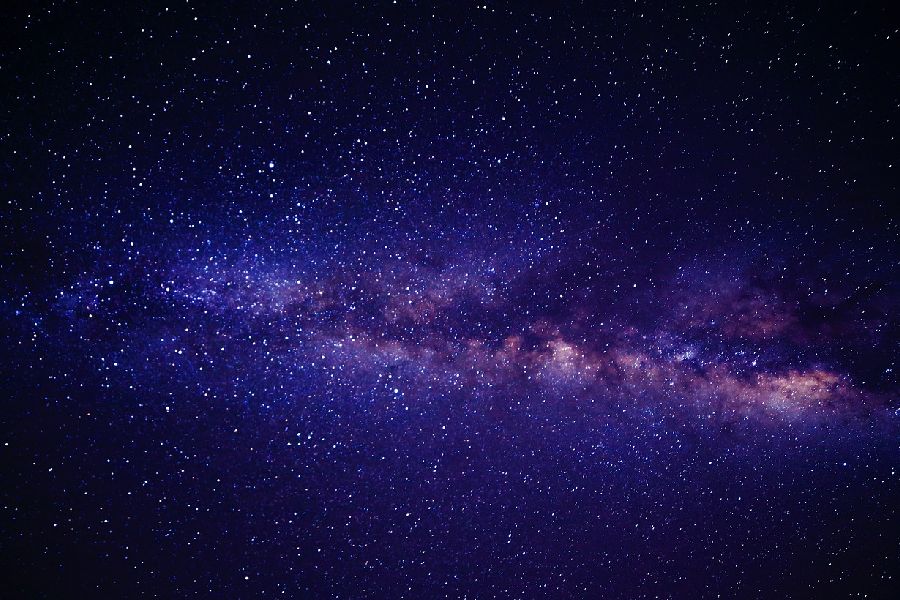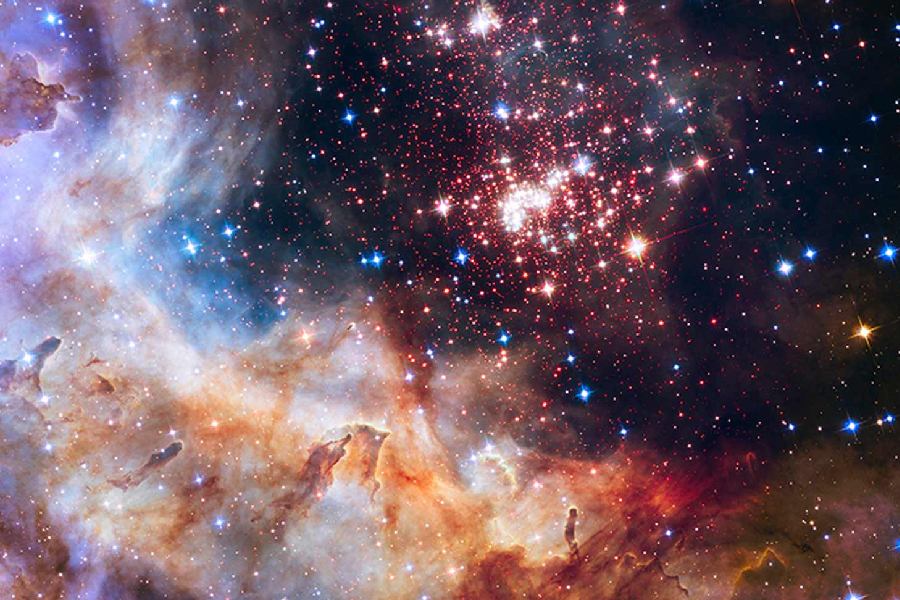When we look up at the night sky, what are we really seeing? Beyond the scattering of stars lies many types of stellar gems, each with their own traits. Every point of light represents an entirely different class of star. But what types of stars appear on a given night?
From small red dwarfs to enormous blue hypergiants millions of times more massive than our Sun, stars vary tremendously in brightness, temperature, size, and color.
Sorting stars by key features provides insight into how they work, their life stories, and what powers them. As astronomy advances, new exotic types of stars keep emerging, from rapidly spinning pulsars to evaporating protostars that showcase extremes.
In the following, you’ll learn about the range of star categories and how to tell them apart. As we overview the system for classifying stars, we’ll explore the sequence grouping star types by color and temperature. The glittering sky presents a glimpse into the diversity of stars scattered across our galaxy.
Different Types of Stars
How are stars classified? Stars vary widely in characteristics, leading to distinct types based on size, temperature, and evolutionary stage. These diverse stellar types contribute to the intricate cosmic balance:
- Main sequence stars – like our sun, are the most common, fusing hydrogen into helium
- Red giants – are aging stars expanding after depleting core hydrogen
- White dwarfs – are remnants of low to medium-mass stars
- Supergiants – much larger and more luminous, mark the advanced stages of massive stars
- Neutron stars – form from collapsed cores and are incredibly dense

Main sequence stars – Celestial powerhouses
Among the most critical stars across the galaxies are those fusing hydrogen in their cores known as main sequence stars. Our own Sun exemplifies these ubiquitous atomic furnaces converting mass into radiant energy and heat.
Over 10 billion years old, the Sun stabilizes itself through a balance of gravity pulling its gasses inward and the outward radiation pressure from nuclear fusion reactions in its core. Most stars reside on the main sequence, steadfastly fusing hydrogen into helium to illuminate the cosmos.
This enduring balance between the crushing forces of gravity and blistering internal radiation pressure sustains these stars for billions of years, enabling them to stably cast light, warmth and vital chemistry outward into their planetary systems.
Red giants – Aging stars in cosmic bloom
As main sequence stars like our Sun age past 10 billion years, hydrogen fuel in their cores begins running low. This causes core fusion to slow down, disturbing the equilibrium against gravity’s crush.
As compression increases in the core, outer layers dramatically expand into red giants up to 100 times wider than the star’s original size. Enormous dark red spheres now blaze hundreds of times brighter, emitting this energy at cooler temperatures resulting in redder hues.
Despite epic expansion during the red giant phase, the dense hot stellar core continues generating elements like helium and carbon while the swollen envelope ejects its outermost layers into shimmering planetary nebulae.
So amidst gathering cosmic debris fields, these luminous elderly stars unveil incredible intricacy hidden behind their former main sequence lifetimes.
White dwarfs – Cosmic remnants
As smaller stars like our Sun exhaust their nuclear fuel after the red giant phase, they shed their outer layers completely, leaving behind a condensed glowing stellar remnant called a white dwarf.
Approximately the size of Earth, these fading cores glow white hot, supported against gravitational collapse by electron degeneracy pressure, allowing them to slowly cool for billions of years.
Composed of carbon and oxygen crystallized around a carbon-fusing core, white dwarfs represent the final evolutionary stage of stars not massive enough to achieve a supernova.
Trillions estimated to exist, they gradually fade to black dwarfs over eons as our own Sun will one day do – a destiny marking the mass, lifespan, and cosmic legacy that even an average main sequence star may achieve.
Supergiants – Celestial giants illuminating the cosmos
Massive supergiant stars constitute the largest and most luminous specimens, destined to end spectacularly. Rigel in Orion and Betelgeuse typify blue and red supergiants, respectively, each over 20 times more massive than our Sun.
These short-lived, rare giants fuse elements rapidly through immense cores on the order of our whole solar system. They release intense stellar winds and radiation, shaping the surrounding interstellar clouds. As they approach their explosive finale, they create a mesmerizing spectacle in the cosmos.
In death, the most massive supergiants may birth black holes. In life, their brilliance seeds new generations of stars and intelligent life across galaxies, leaving a vivid mark of their grandeur in the vastness of interstellar darkness.
Neutron stars – Densities defying imagination
When a star eight to 20 more massive than our Sun perishes in a supernova, the stellar core implodes into an exotic sphere 10 miles wide yet weighing as much as Earth’s Sun – this is a neutron star.
Mind-bending properties of neutron stars
Composed of positively charged protons and neutral neutrons crushed together, teaspoonfuls of neutron star matter would weigh billions of tons on Earth.
Neutron stars bend imagination – they spin so fast, almost at the speed of light, and have incredibly powerful magnetic fields. If our planet were compressed to a similar density, it would fit inside a stadium scoreboard yet weigh more than all humanity combined.
Twisted spacetime, gamma ray bursts, the acceleration of high-energy particles – neutron stars showcase some of the cosmos’s most extreme physics condensed just beyond total gravitational annihilation.
It’s remarkable how, even in the midst of the intense and violent processes surrounding dying stars, vibrant nebulas like the Crab Nebula come into existence and become visible. And when we consider that just a sugar cube-sized amount of neutron star material weighs 100 million tons, it becomes clear that the forces at play in the universe are far beyond what we experience here on Earth.

Spectral Classification – Unveiling the Cosmic Rainbow
The spectral class scheme categorizes stars by surface temperature, which manifests as color to our eyes. Hotter stars appear bluish-white, while cooler stars seem reddish-orange.
Stellar colors and temperatures
The reason we see a contrast in colors across different types of stars is because the temperature of a star determines the dominant wavelength of light it emits. Just like how hotter fire appears blue and cooler embers fade to red, the same principle applies to stars.
By examining the intensity of dark absorption lines in stellar spectra, scientists have classified stars into different types, such as O, B, A, F, G, K and M sequence stars. The sequence starts with the hottest blue stars (72,000°F/40,000°C) and goes down to the coolest red dwarfs (4,000°F/2,500°C).
Our Sun, for example, is classified as a G2 star, with surface temperatures around 10,800°F (6,000°C).
To remember the order of star types, you can use the mnemonic “Oh Be A Fine Girl/Guy, Kiss Me” to help you recall the sequence.
Insights revealed
Understanding star colors and temperatures reveals insights into their mass, luminosity, evolution, and ultimate fate.
Just as the rainbow unfolds across wavelengths, the stellar sequence showcases variety across the Hubble spectral classification, charting types of stars by the different elements absorbed and radiated in their outer atmospheres.
Variable Stars – Cosmic Pulsations and Fluctuations
Unlike seemingly static points of light, some stars intrinsically vary in brightness over time, expanding and contracting from internal pulsations or erupting when gravitationally disrupted.
Monitoring these detectable brightness fluctuations enables incredible insights ranging from calculating cosmic distances to mapping intricate orbital star dances.
Observing recurring variable stars like Delta Cephei and RR Lyrae gives astronomers reliable “standard candles” to gauge distances across tens of thousands of lightyears and time pulsational periods.
Irregular cataclysmic variables and flare stars unveil more chaotic stellar behaviors through dramatic jets, eruptions, and stellar swallowing. Each category of variable star helps expand the frontiers of astronomical knowledge.
Binary Stars – Celestial Dance Partners
Over half the stars in our galaxy belong to multiple star systems bound by gravity, orbiting a collective center of mass. Some shine brightly in vibrant hues like contrasting Alberio, while others eclipse each other from our viewpoint.
Mass exchange dramatically alters the evolution of close binaries into vivid novas or violent supernovas. The intricate orbits traceable across decades using spectroscopy reveal dynamic intricacy through these gravitational ballets.
Mutual gravitational interactions can eject planets from habitable zones or inspire second generation worlds to form from shared stardust. The cosmic choreography of binaries illustrates stellar gravities crafting spectacles visible even at interstellar distances through telescopes.
Main-Sequence Stars – The Cosmic Norm
The majority of stars observable across the glittering expanse of the Milky Way and other galaxies belong to the main sequence category. Main sequence stars fuse hydrogen into helium in their cores, generating heat, light, solar winds, and other emissions over a remarkably stable period averaging five to 15 billion years in length.
Reliable cosmic engines
Our Sun exemplifies yellow main sequence stars of middling temperature, mass, and luminosity relative to hotter blue stars or cooler red dwarf varieties.
Supported by balancing inward gravitational pressure and outward radiation pressure, main sequence stars persist for lengthy epochs as reliable cosmic engines, stably converting mass into radiant energy.
Over 90% of a main sequence star’s lifespan is devoted to smoothly fusing hydrogen before heavier helium ash accumulates in its core. As the longest singular phase in most stars’ maturations, the main sequence phase anchors stellar life cycles.
Their reliable shining enables dependable illumination for life-bearing worlds to evolve around them. For all the violence accompanying cosmic creation and destruction elsewhere, main sequence stars prevail as monuments to long-term stability expressed through the cosmos.
Conclusion
The night sky presents a panorama filled with stellar variety, showcasing the diversity of stars scattered throughout the cosmos. From relatively cool red dwarfs to blistering blue hypergiants, stars manifest incredibly different properties and behaviors based on their mass, temperature, age, and other parameters.
We hope surveying the classifications and attributes of the myriad types of stars has illuminated that even the twinkling dots of light overhead tell epic sagas about the forces that shaped them. Analyzing their spectra continues unveiling insights into stellar mechanics and the exotic quantum furnace reactions within.
By appreciating the menagerie of celestial bodies alight after sunset, we better grasp the dynamics of gravity, fusion, and expiration, which sculpt such wondrous manifestations across the galaxies. This article aimed to convey that a variety of stellar gems shine overhead, each representing a snapshot into the life cycles of stars.
